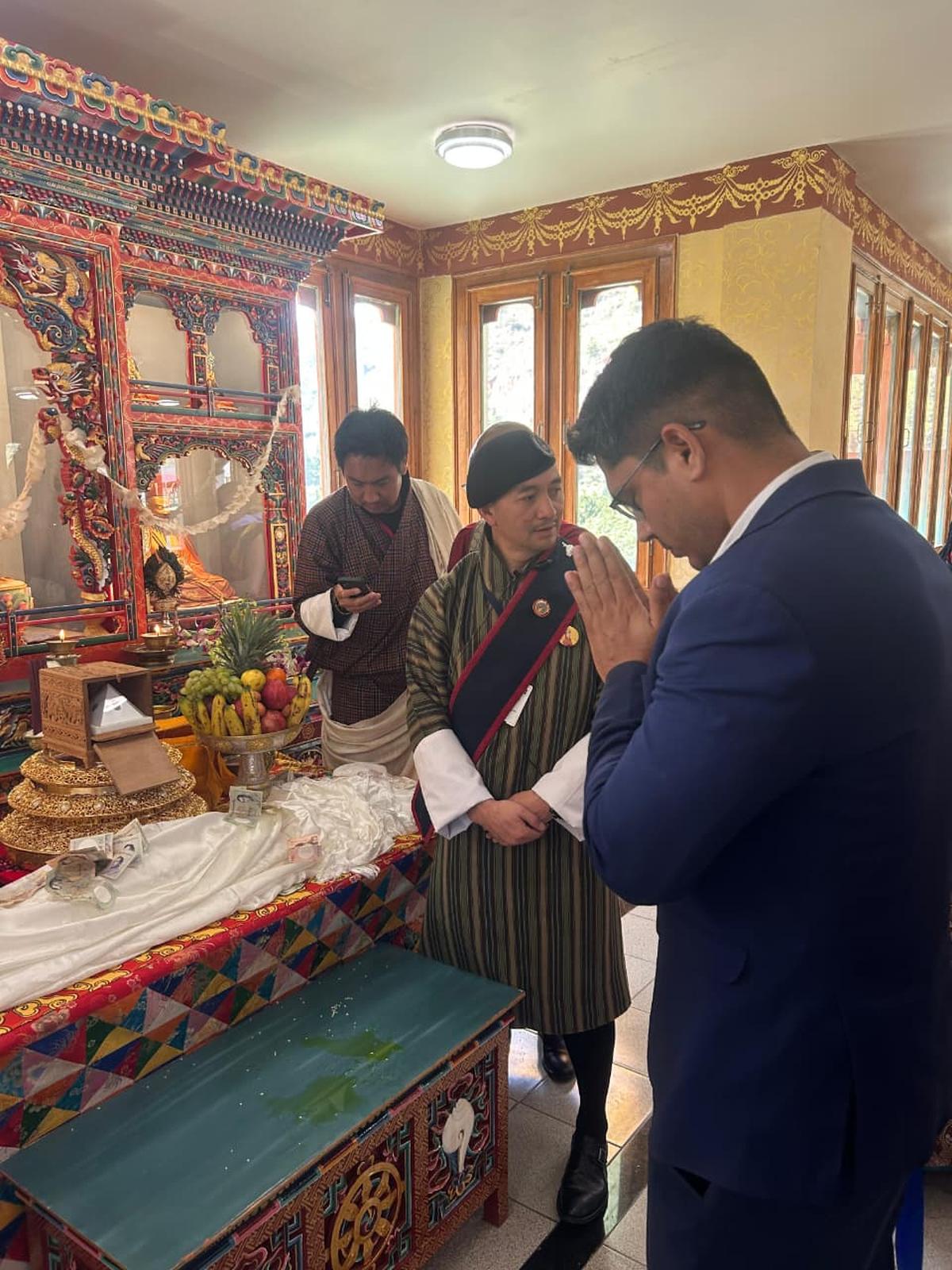The sacred relics of Lord Buddha, a “goodwill gift” from India to Bhutan during the 16-day Global Peace Prayer Festival (GPPF), reached Thimphu on Saturday (November 8, 2025), ahead of Prime Minister Narendra Modi’s scheduled visit. The sacred relics will remain in Bhutan until November 18 before returning to India.
The casket containing the relics — a part of the remains of the Buddha’s body — will be enshrined at the Grand Kuenray of Tashichhodzong, near the palace of the King of Bhutan in Thimphu, for public display from November 12 to 17.
The enshrinement of the relics will be in commemoration of the 70th birth anniversary of the fourth King of Bhutan, Jigme Singye Wangchuk. His birthday coincides with Mr. Modi’s visit to Thimphu on November 11 and 12 for the GPPF.
This will be Mr. Modi’s second trip to Bhutan in two years.
“There is a lot of interest and appreciation in Bhutan because the sacred relics of Lord Buddha have reached Thimphu during the GPPF,” Sandeep Arya, India’s Ambassador to Bhutan, told journalists, after the relics — escorted by a high-level delegation from the Government of India — arrived from New Delhi at Paro International Airport in the afternoon. Paro is about 50 km from Thimphu.

The relics of Lord Buddha after arrival at Bhutan’s Paro International Airport from New Delhi on November 8, 2025.
| Photo Credit:
Special Arrangement
Earlier, Bhutan’s Prime Minister Tshering Tobgay said that he saw the relics as a “gift from PM Modi” to the people of Bhutan. “The gesture shows that the two countries are on the same page when it comes to spiritual collaboration, not just political and developmental cooperation,” he said.
Piprahwa relics
According to the Centre for Bhutan and Gross National Happiness Studies, the organisers of the GPPF, the relics are named after Piprahwa, a site in Uttar Pradesh near the Nepal border, where they were discovered. They are also referred to as the Piprahwa-Kapilavastu relics. “The relics hold profound historical and spiritual significance, and are regarded among the most venerated objects in the global Buddhist tradition, as they have been validated to be directly associated with Lord Buddha,” a spokesperson said.
The relics of Piprahwa, identified as the site of ancient Kapilavastu, were excavated in the late 19th century by British archaeologist William Claxton Peppe.
Kapilavastu was the capital of the Shakya clan, where Prince Siddhartha spent his life before enlightenment and became Gautama Buddha.
A scripture devoted to the end of Lord Buddha’s life says that he sanctioned his mortal remains to be cremated and enshrined in stupas. After the cremation around 483 BCE, some corporeal remains – bones, hair, nails, and teeth – became the sacred Śarīra Dhātu (relics), symbolising the living radiance and spiritual presence of the Buddha.
These relics were divided into eight parts and distributed among the kings, including the Shakyas of Kapilavastu, each of whom erected stupas within their domains for veneration. This was the beginning of a tradition that spread across Asia, forming the basis of Buddhist devotional and pilgrimage practices for more than two-and-a-half millennia.
Chants for peace
Eminent lamas or Buddhist monks from Bhutan and beyond have converged at the Changlimithang Stadium, the main venue of the GPPF, to chant throughout the day for peace and happiness in a conflict-scarred world.
The GPPF is “of all vehicles of Buddhism and of all schools of Vajrayana Buddhism”. The belief in Vajrayana Buddhism is that one can reach enlightenment in a single lifetime, instead of having to practice ethics, morality, compassion, and meditation through many.
A part of the peace prayers from November 4 to 10 is the ritual of Jabzhi Dhoechog, conducted by Bhutan’s Central Monastic Body. The ritual, seldom performed on such a large scale, combines peaceful offerings with protection from wrath, for “healing, cleansing, and purifying the body, speech, and mind of negative karma”.
The centrepiece of the GPPF is the three-day Kalachakra empowerment led by the Je Khenpo or Chief Abbot from November 12 to 14. This ritual offers a tantric map of the universe within the human body and is revered as a spiritual vehicle to avert catastrophe.
The GPPF concludes with the full bhikkhuni ordination of Buddhist nuns from November 15 to 19 at the Bhutan Nun Foundation. This will be the second such ceremony in Bhutan after 2022, advancing gender equality in monastic life.
(This correspondent is in Thimphu on the invitation of the Government of Bhutan)

